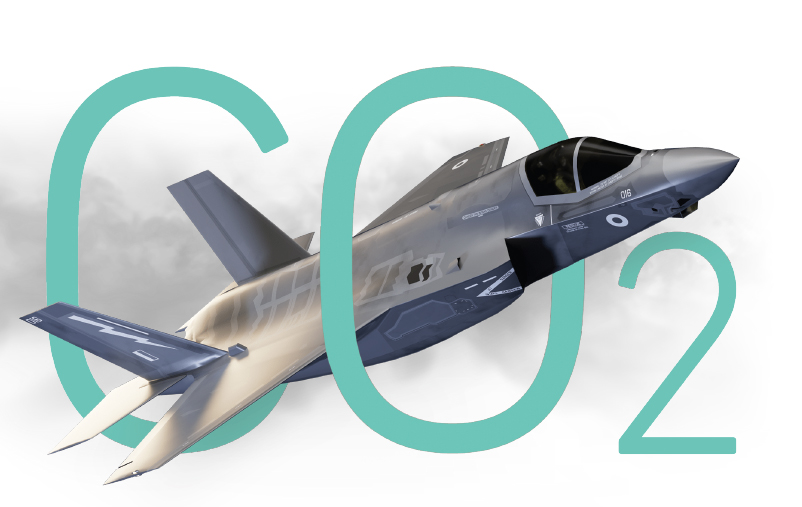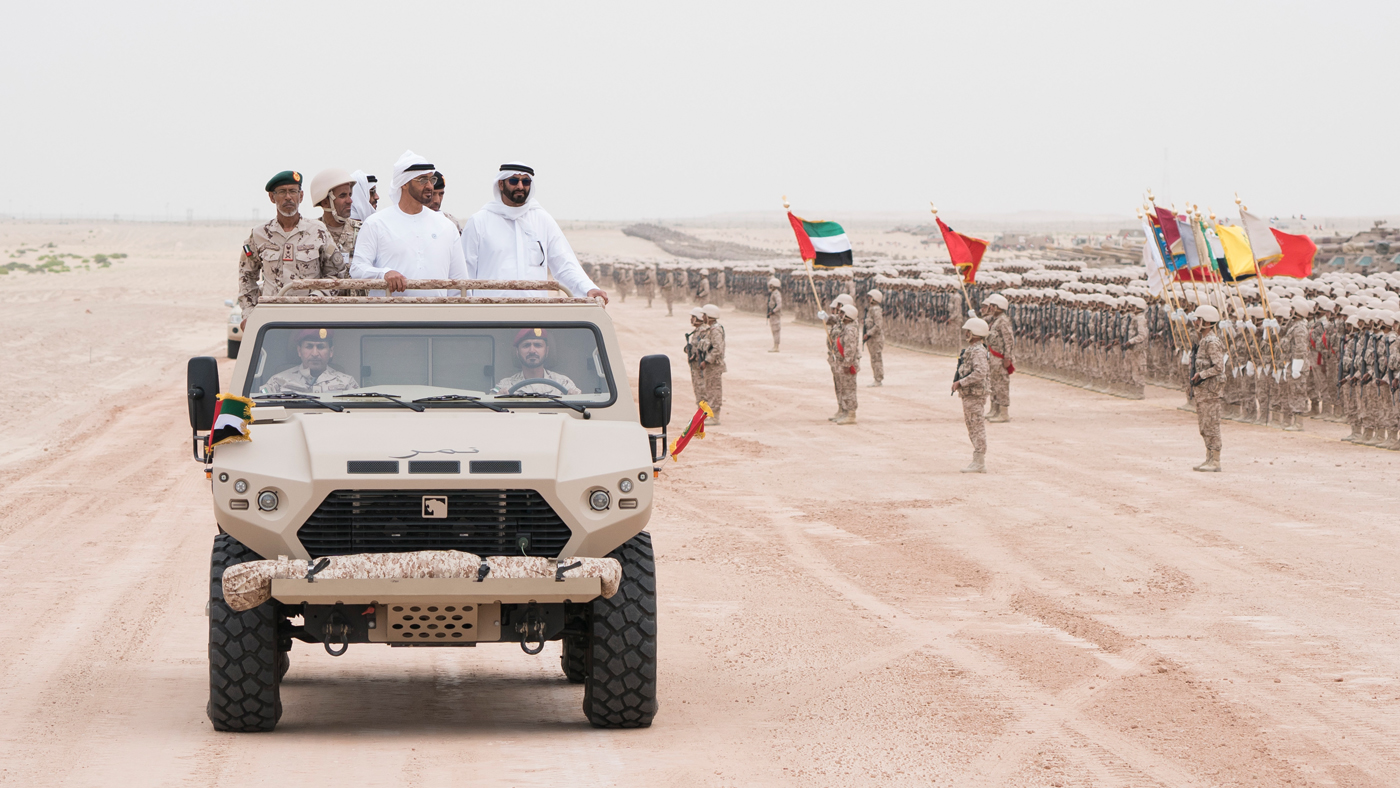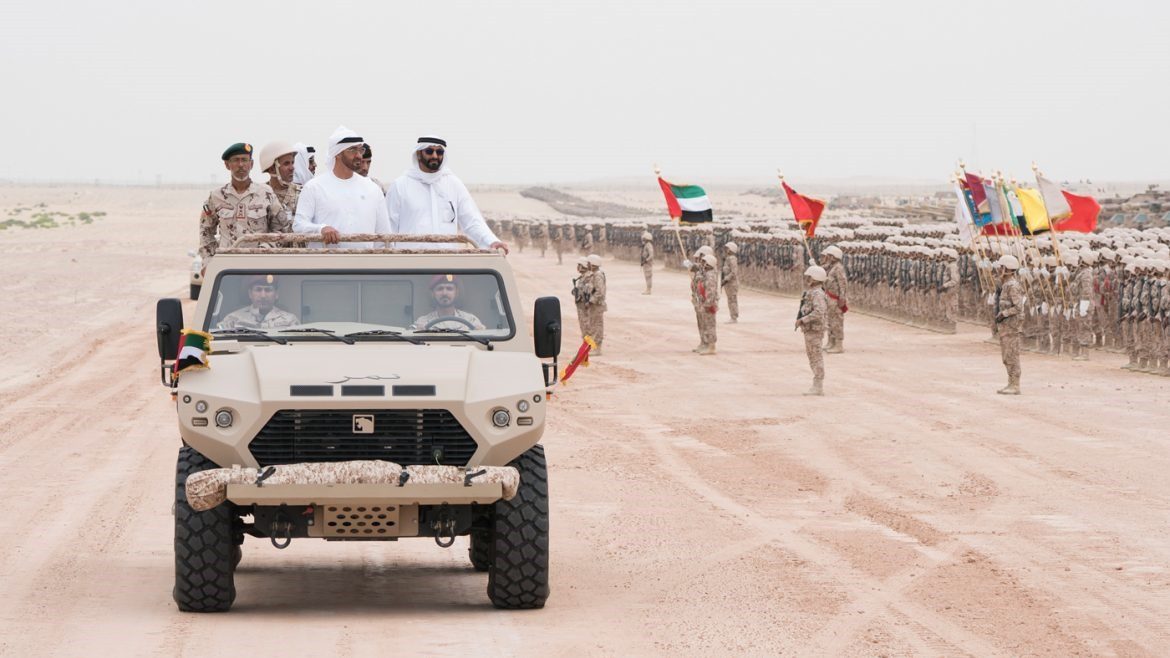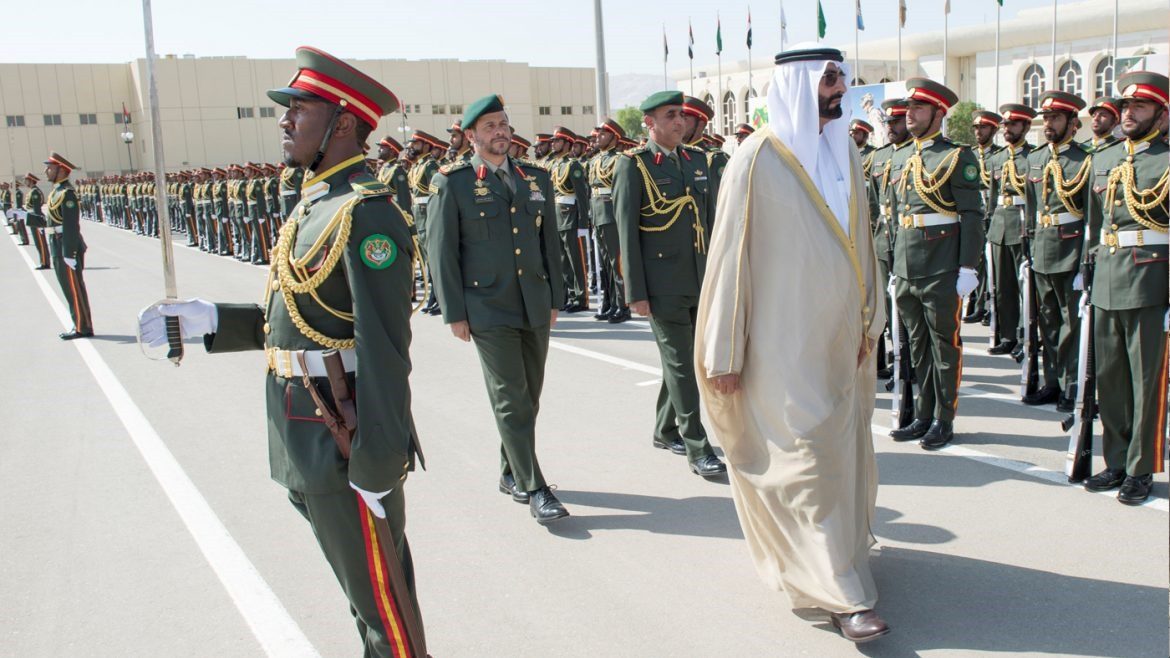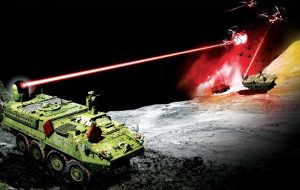Estimating the total carbon emissions from the world’s armies and their associated military industries is challenging. However, some Western reports have estimated that the global military carbon footprint accounts for about 5% of worldwide carbon dioxide emissions. In 2021, the International Military Council on Climate and Security announced that defence is the largest institutional consumer of hydrocarbons globally.
In the framework of the Sustainable Development Strategy issued by the United Nations in 2015, a global agreement was made to limit the rise in global temperatures to 1.5 degrees Celsius above pre-industrial levels. Achieving this goal requires reducing global greenhouse gas emissions to net zero by 2050, implying a significant reduction in fossil fuel dependence across various sectors, including the military. There is a growing conviction in the West that armies must play a crucial role in reducing carbon emissions. Consequently, in light of current global energy transitions and the worsening climate crises, numerous challenges are anticipated for future military operations. Many scholars have proposed the concept of “low-carbon warfare” as a potential approach to disentangle military activities from fossil fuel reliance. This concept aligns with current trends of moving away from fossil fuels.
The Impact of Climate Change on Military Operations
In 2019, General Sir Mark Carleton-Smith, the then Chief of the General Staff in the United Kingdom, suggested that the current generation of military equipment might be the last to rely on fossil fuel engines. The concept of “low-carbon warfare” (also referred to as carbon-neutral warfare) points to potential changes in military operations, incorporating carbon costs into military decision-making processes.
While international interest in the relationship between climate and security has been steadily growing since the 1970s, it only gained significant importance in the mid-1980s. In 1987, the World Commission on Environment and Development released the “Our Common Future” report, highlighting the necessity of considering the climate-security nexus. This led to the emergence of the “environmental security” concept, prompting many countries to integrate climate considerations into their national security strategies. For instance, the United States’ National Security Strategy issued in October 2022 acknowledged climate change as an existential challenge. Similarly, the European Union and NATO’s strategies reflect this concern, as does Russia’s 2021 National Security Strategy, which explicitly mentions the security threat posed by climate change and the need for prevention and adaptation.
Climate change and extreme weather events have broad implications for military environments, infrastructure, capabilities, and equipment. For example, rising sea levels could flood coastal military bases, as seen with the United States’ naval base in Norfolk, which experiences frequent flooding. China faces similar risks at its coastal bases in Hainan and Jiangsu.
Additionally, climate change will compel armed forces to operate in increasingly variable environments and address escalating conflicts over power and resources. This includes adapting to new operational conditions and intervention requirements. A clear example of climate change impacting military operations is its effect on seawater salinity, significantly affecting submarine and anti-submarine operations. Furthermore, climate change impacts nuclear power plants, which were constructed without considering climate dimensions, heightening the risk of potential damage, especially without modifications to existing nuclear facilities.
Moreover, climate change will directly affect military operations by necessitating the redeployment of forces to regions with harsh climatic conditions, such as the Arctic, where melting ice has created a new geostrategic competition zone or regions with extreme heat like the Middle East and Africa. Some estimates suggest that high temperatures could impair the United States’ ability to use its stealth fighter, the F35.
Harsh climatic conditions impact not only military equipment and missions, forcing reductions in mission numbers and aircraft payloads, but also affect surveillance and control systems. These conditions also take a toll on soldiers’ health and endurance. For instance, in 2003, about 800 British soldiers suffered from heat-related issues in Iraq.
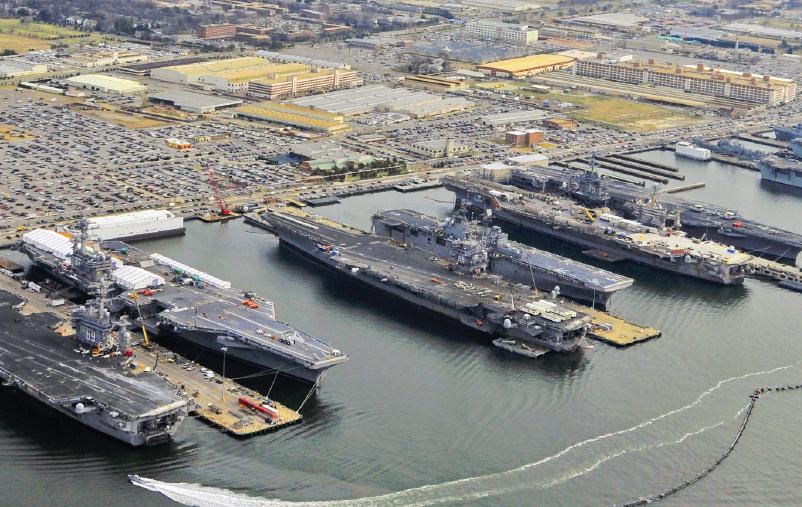
Transitioning from “Greening Defence” to Low-Carbon Military Operations
Over the past few decades, nations have increasingly recognised that climate change poses significant threats to both national and international security. Western powers have expressed concerns about these impacts through the concept of “climate security,” which highlights the potential repercussions of climate change in exacerbating instability, insecurity, and violent conflicts globally. Despite national armies often being exempt from environmental regulations, the late years of the Cold War saw the first calls for “greening the military.” This was reaffirmed in the Kyoto Protocol of 1997, which addressed military emissions. Since the early 2000s, internal pressures on Western defence ministries to reduce carbon emissions have grown, prompting some countries, notably the United Kingdom, to enact national legislation setting clear and binding carbon reduction targets. This indicates a trend among Western nations to attempt to reduce the carbon footprint of their defence sectors, with the primary criterion being that “greening the military” must not compromise the effectiveness of military operations.
”Greening the military,” or “eco-friendly armies,” refers to the shift towards using environmentally friendly and renewable energy sources. This involves strategic changes in military structures, aiming to reduce reliance on high-emission weaponry and secure military energy needs through clean energy sources.
Reasons for Western Governments’ Focus on Greening the Military
Several key factors have driven Western governments to focus on greening the military. Rising oil prices, along with the impacts of the wars in Afghanistan and Iraq, highlighted concerns about the increasing costs of fossil fuel-dependent military activities. This explains the decline in Western interest in greening the military following the withdrawal from Iraq and the sharp drop in global oil prices in 2014. Additionally, Russia’s annexation of Crimea led NATO to bolster its conventional defence capabilities in Europe, marking what some consider the end of the first wave of Western interest in reducing carbon emissions in military operations under the “greening defence” concept.
One notable outcome of the first wave was demonstrating that it is possible to convince militaries to reduce carbon emissions as long as it does not impair military effectiveness. The Paris Climate Agreement of 2015 then heralded a new wave of international focus on reducing carbon emissions generally, aiming to limit temperature increases to a maximum of 1.5 degrees Celsius above pre-industrial levels and achieving net-zero carbon emissions by 2050. Signatories to the agreement committed to reducing their national emissions, including military emissions.
However, transitioning away from fossil fuels remains a complex task. The primary responsibility of militaries is national defence, and the need to maintain operational capability will likely influence the speed and extent of any shift to alternative fuels. The ongoing conflict in Ukraine has highlighted that nations may prioritise national survival over carbon emissions and climate concerns when necessary.
Despite this, several defence and security research centres, particularly NATO’s “Centre of Excellence for Energy Security,” have proposed various options for low-carbon warfare. These include developing and adopting alternative fuels, such as biofuels or synthetic fuels. The concept of “refuelling” has emerged as a particularly attractive option, exemplified by the United States’ ”Great Green Fleet” initiative, which demonstrated the capability to fuel a carrier strike group with advanced biofuels. Similarly, the United Kingdom’s Royal Air Force has successfully powered its large military aircraft with sustainable aviation fuel.
The Impact of “Low-Carbon Warfare” on Future Geostrategic Competition
The future of military operations amidst current climate changes and international carbon reduction efforts remains shrouded in uncertainty. Although numerous Western studies have explored this subject, most have yet to resolve the debate on how militaries will handle the challenges of reducing fossil fuel dependence and the potential repercussions.
In addition to the security implications of climate change, there are geopolitical and security risks associated with the deployment of emerging climate technologies, such as solar geoengineering options. Some literature has begun referring to this as the ”second climate war.” The first climate war was a soft war based on ideas and knowledge, whereas the second is expected to involve military conflicts or hybrid wars rather than being another cold war.
Some estimates suggest that negative emissions and geoengineering options will become the backbone of a low-carbon society and the goal of achieving net-zero carbon emissions. These options do not require global coordination but can be implemented by a smaller group of international actors. While geoengineering is a practical tool for future wars, it currently seems less likely. However, the potential conflict to halt the deployment of geoengineering is more probable.
This aligns with a report published by the French “Observatory for Defence and Climate” in November 2023, which revealed several potential scenarios for future conflicts related to geoengineering options and their role in addressing climate change. The first scenario involves the United States unilaterally employing the “stratospheric aerosol injection” technique, prompting other international powers, particularly China and Russia, to threaten military intervention against this American move. The second scenario involves China launching its “Arctic X” project, aiming to increase marine cloud brightness over the Arctic and thereby reduce the amount of solar radiation reaching the Earth. This project is expected to face strong opposition from Russia, which views the melting ice in Greenland and the Barents Sea as an opportunity to use the Arctic as a commercial shipping route, not to mention the natural resources present in the region.
Currently, reporting military carbon emissions remains voluntary rather than mandatory in most countries. However, it may become increasingly difficult to maintain this stance amidst the noticeable and continuous increase in extreme weather events. Despite this, many international commitments to reduce greenhouse gas emissions may not be strictly enforceable.

Can “Low-Carbon Warfare” Change the Existing Rules of the Game?
In preparation for climate change, military forces are now allocating budgets for adaptation, exemplified by the U.S. Department of Defense dedicating approximately $617 million for climate adaptation policies in the fiscal year 2022. Reducing carbon emissions presents various challenges and opportunities for different defence ministries. Some powers might opt to retain high-carbon traditional capabilities, such as tanks and fighter jets until fossil fuels are exhausted. During this decade, it seems difficult to maintain operational capabilities while reducing carbon emissions, necessitating compromises by the defence sector.
A significant portion of the military’s carbon footprint originates from vehicles and platform systems heavily reliant on fossil fuels. Ground vehicles may be the easiest to transition to renewable energy sources, while naval and air forces face greater challenges due to their larger platforms. Proposed options to significantly reduce carbon emissions include using alternative fuels, alternative defence systems, improving fuel efficiency, and employing unmanned platforms and artificial training.
European armies have begun reducing emissions from military installations, expanding the use of microgrids for self-sufficiency, and contributing to national energy generation by finding innovative solutions for safe energy storage and restructuring defence supply chains to mitigate and adapt to climate change effects.
Some Western countries are developing green weapons and ammunition. The United States initiated a programme in 1994 to produce environmentally friendly ammunition, manufacturing 5.56mm rounds. Since 2017, the U.S. Army has been exploring biodegradable ammunition for training purposes.
A primary concern for armies adopting low-carbon warfare is the potential of facing high-carbon adversaries on the battlefield. British reports indicate that electrified ground forces (low-carbon) may struggle to match the strength and capabilities of fossil-fuel-dependent forces, suggesting that nations shifting towards low-carbon warfare will need to reassess their combat doctrines.
On another front, low-carbon warfare could reshape the rules of the game regarding supply chains and energy sources. For instance, the Russia-Ukraine war prompted European armies to reduce reliance on fossil fuels to diminish dependency on Russian natural gas and oil supplies. On the other hand, the expansion of alternative energy sources will increase the demand for rare minerals, of which Russia produces significant quantities, potentially enhancing Moscow’s role in this aspect.
Potential Challenges of Low-Carbon Wars
As the U.S. Department of Defense, the largest energy consumer in the U.S. federal government expands electrification in its military activities, including tanks, vehicles, ships, and aircraft, it has considered deploying small nuclear reactors in future battlefields for necessary power. However, American reports highlight strategic implications to consider whenever military energy systems change. Historical examples, such as former British Prime Minister Winston Churchill’s decision to switch the Royal Navy’s main energy source from domestically produced coal to imported oil, illustrate these repercussions. Similarly, while the diversity of energy sources is a key determinant of the United States’ strength and energy security, the move away from fossil fuels may impact this diversity, making the U.S. more reliant on foreign sources for the necessary minerals for electrical systems.
Moreover, focusing on electricity production as the main energy source, and enhancing energy system interconnectivity increases the risk of cyber-attacks and potential threats to hydroelectric and nuclear power stations. Another challenge is obtaining electricity on battlefields, as power lines are effective only over short distances. Additionally, the time required to charge batteries compared to refuelling presents further challenges to military effectiveness. Hence, despite the positive impacts of low-carbon wars, they involve several challenges, necessitating more studies and discussions before making final decisions.
In conclusion, Western armies are increasingly responding to how climate change reshapes the operational environment of military forces and their role in addressing these changes. European defence institutions are actively integrating climate change into their policies and strategic plans, with most Western strategies setting achievable short-term goals for emission reductions. These focus on enhancing energy efficiency in installations and infrastructure, electrifying non-tactical vehicle fleets, installing renewable energy systems, and initiating pilot projects to integrate new technologies such as hydrogen and synthetic fuels (or e-fuels).
» By: Adnan Moussa
(Assistant Lecturer at the Faculty of Economics and Political Science, Cairo University)


